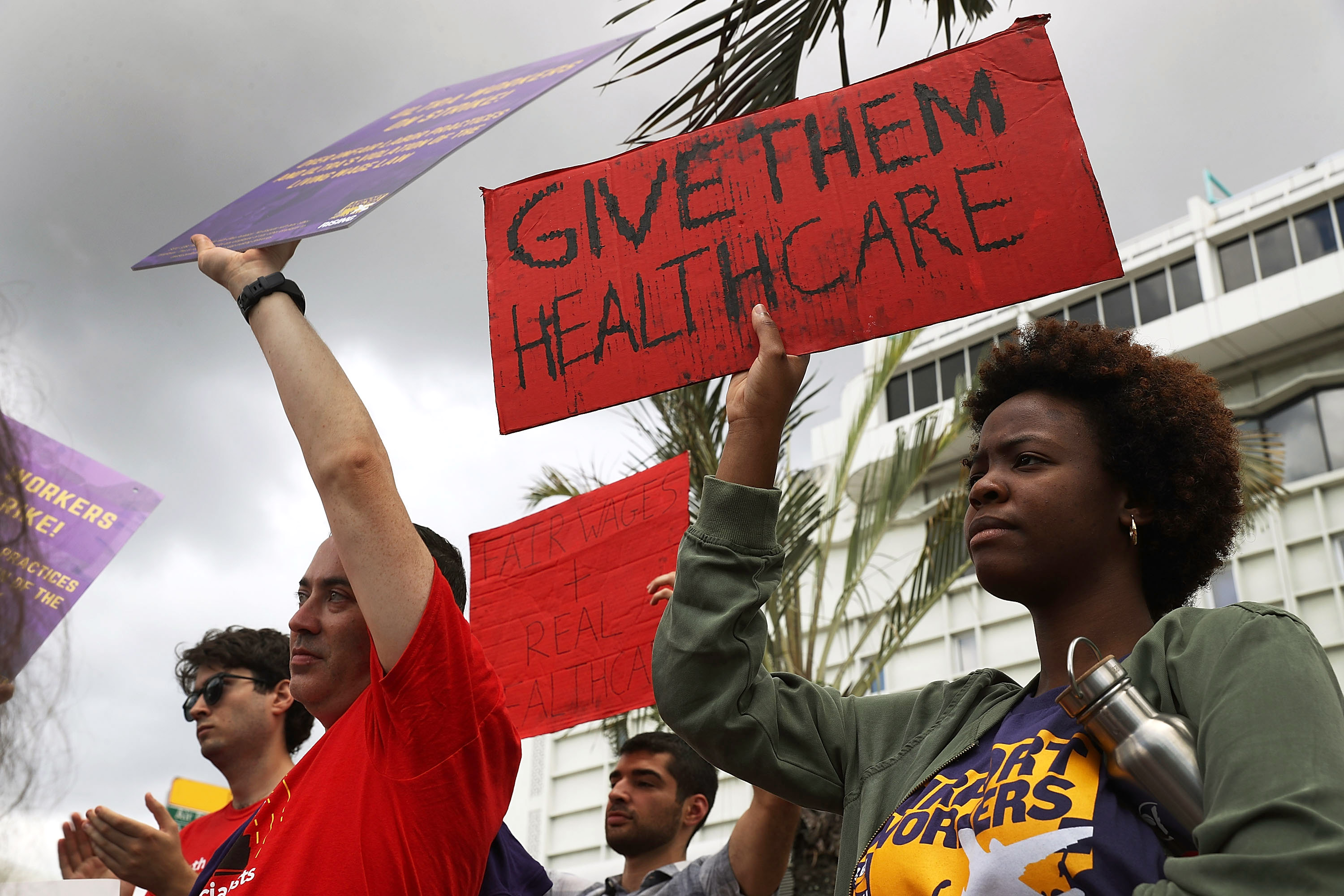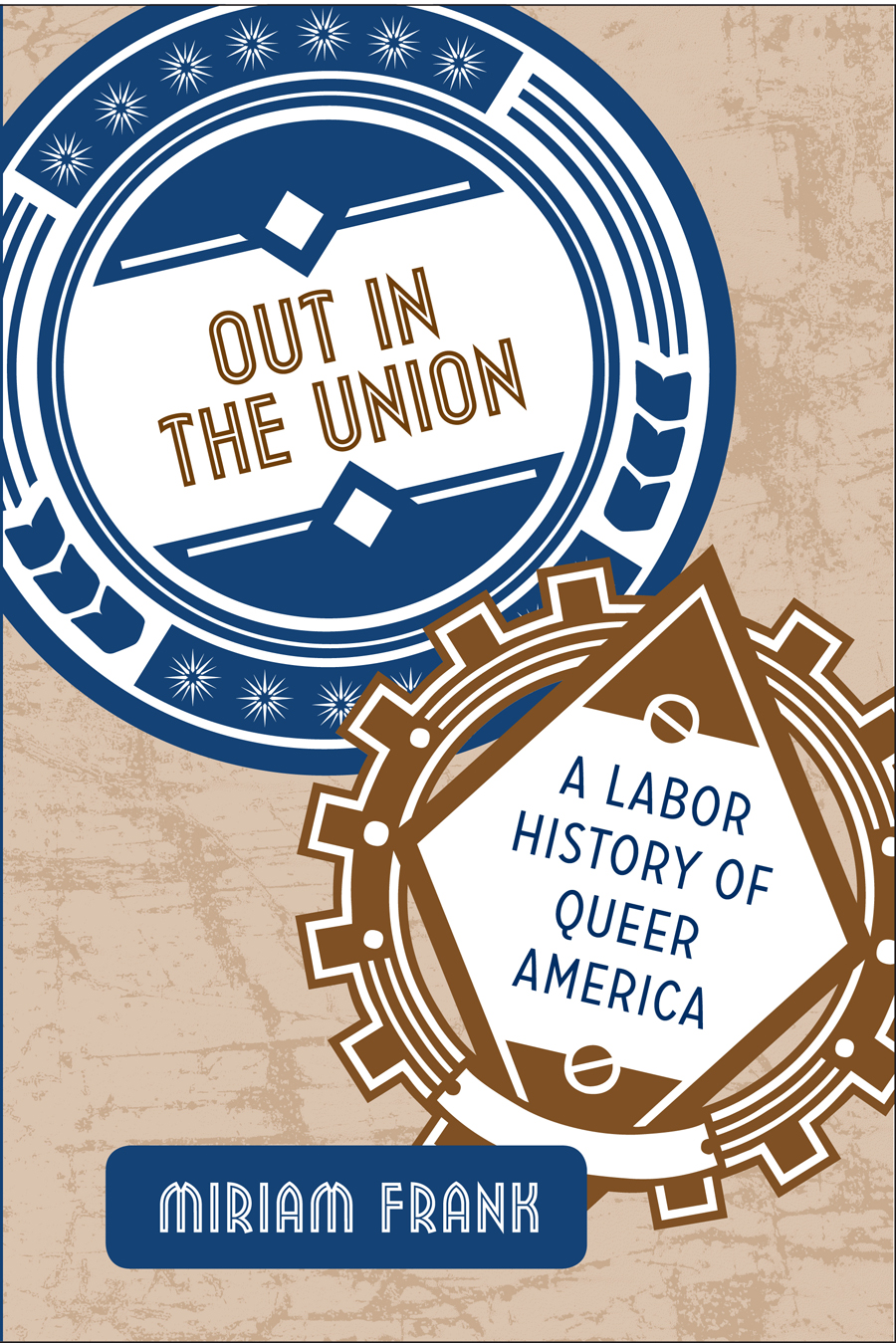Recent years have seen major triumphs for gay rights, while the labor movement has suffered some big setbacks on state and national levels. In fact, both movements have often defended—and depended upon—the same people. Many gay people are poor and working class, and members of the LGBTQ community have long relied on rights secured by their unions to protect them in the absence of legislative rights. The LGBTQ community has always been part of the broader labor movement, and advances in LGBTQ rights have often been explicitly related to workplace equality. Still, the significant overlap between gay and transgender rights and the concerns of the working class has not always led to mutual cooperation—and there’s plenty of room for activists at the intersection to work together more closely.
Miriam Frank, a recently retired professor of cultural history at New York University and author of the book Out in the Union: A Labor History of Queer America, tells Pacific Standard that LGBTQ people have always been a part of the labor community, and that the two movements have provided mutual support. Though evidence of trans and gay people pushing for inclusion and protections at work dates back to the very beginning of the labor movement, Frank says the close relationship began in earnest in the 1970s and ’80s. At this point, Frank says, LGBTQ people started coming out at work and in their unions in greater numbers.
From that point onward, LGBTQ rights became integral to many unions, not just in the United States but also globally. In 1984 and ’85, when British coal miners went on strike, gay people formed an alliance of solidarity, Lesbians and Gays Support Miners, and raised £11,000 (the equivalent of about $44,173 today) in support of the strikers. Gay people also joined black, Latino, and feminist communities for a 10-year-long American Federation of Labor and Congress of Industrial Organizations strike at Coors, a company which the New York Times described at the time as “ferociously anti-union.” The strike began in 1977 and had a major effect on the company: The Times reported that Coors’ annual profits dropped by $23 million (from $67.7 million to $44.7 million) between 1977 and 1984 alone. The company simply couldn’t function as it needed to without minority employees, and the strike ended after Coors agreed to a number of concessions, including a vote on union leadership at the flagship brewery.
Of course, the labor movement is a big tent, and its constituents have not always been supportive of trans and queer labor concerns. In 1972, George Meany, the president of the AFL-CIO and a key figure in the labor rights movement, ridiculed efforts to secure a gay rights plank in the Democratic party platform. Just last year, a gay police officer in Honolulu, Hawaii, spoke out against his union president for saying, in 2013, that “you’d have to kill me” before he would agree to enforce gay marriage laws.
These divisions notwithstanding, the labor movement and the fight for gay rights have proven to be mutually beneficial. After all, many of the rights that queer people were long denied are centered on their ability to work without discrimination, and receive full benefits for their families. This set of overlapping issues can be found in two major recent policies. Consider first the 2016 Equal Employment Opportunity Commission ruling that set the precedent for non-discrimination against gay employees. This ruling was imperative for ensuring workplace legal protections for gay people, a win for labor and gay rights.

(Photo: Joe Raedle/Getty Images)
Legalizing gay marriage on the federal level, arguably one of the most significant civil rights rulings in recent years, also gained support from several major labor unions. In 2012, Joe Hansen, then the president of the United Food & Commercial Workers International Union, said in a statement that “Marriage equality is an economic justice issue, and a social justice issue—and that makes it a union issue.” Several other unions, including the AFL-CIO and Service Employees International Union, released similar statements. And the Supreme Court’s 2015 decision to legalize gay marriage was of major import to queer members of the working class. With legal gay marriage came not only the opportunity for gay people to marry, but also the ability to buy employer-provided health insurance for their spouses.
Though the legalization of gay marriage allows same-sex couples access to more workplace benefits, the working class was largely absent from the mainstream narrative on marriage equality. The Human Rights Campaign, which was instrumental in advancing marriage equality, has been criticized for neglecting the concerns of working-class queer people. After the HRC awarded Goldman Sachs with its Corporate Equality Award in 2012, an op-ed in the Harvard Crimson criticized the choice, noting that the firm had contributed to conservatives including Mitt Romney, who opposed gay marriage and adoption. The fight for gay rights, alas, has not always meant a strict allegiance to working-class queer people.
Further, none of these landmark protections necessarily extend to trans people, many of whom are union members, and are three times more likely than cis people to be unemployed and four times more likely to live in poverty, according to Pride at Work, a non-profit that represents LGBTQ union members. Trans people, especially trans people of color, are among the least-protected and most socially vulnerable minorities in the nation, but there have been elements advocating for trans rights in unions since the 1980s. In Out in the Union, Frank includes the story of a trans worker in an industrial laundry shop who was harassed at work after having gender-confirmation surgery. The worker brought the matter to the attention of her union representative, who helped resolve the problem in the shop and subsequently negotiated trans protections into the Amalgamated Clothing & Textile Workers contract in 1980. Presently, in 33 states, union contracts are the only source for protection from discrimination if you’re trans.

(Photo: Temple University Press)
The recent successes of the gay rights movement in the last several years contrast somewhat with the much slower success of broader labor policies. While gay rights—specifically marriage equality—eventually became a de facto position for liberal politicians and even enjoyed support from some Republicans, other labor concerns have not seen similar support from either side. The campaign to raise the federal minimum wage to $15, for example, has only recently become a firm plank in the Democratic platform.
According to the Pew Research Center, 62 percent of Americans currently support marriage equality, and 48 percent support a $15 minimum wage, as HuffPost reports. In 2016, 51 percent of Americans agreed that trans people should be able to use the bathroom that corresponds to their gender, according to Pew. But despite the growing popularity of several LGBTQ and labor issues among the American public, legislation remains a steep uphill battle.
This resistance to explicitly working-class gay and trans rights is made apparent in Congress’ repeated failure to pass the Employment Non-Discrimination Act. The bill has undergone many changes since it was first introduced in 1994—trans people have been moved in and out a number of times—and has died or been voted down by each Congress to consider it. The bill has always been more popular with Democrats than with Republicans, who are typically more resistant to expanded labor and LGBTQ rights.
Now, progressive issues in virtually every marginalized sector of society face significant resistance in the Trump administration. Davis says that, in the Trump era, the biggest threat to working-class gay people is Mike Pence. The vice president became notorious for supporting anti-gay legislation as governor of Indiana, where he also built a reputation as a union buster. That is to say: Nobody is expecting any sweeping labor or LGBTQ reform as long as Donald Trump and Pence are in the White House.
Though the Trump administration brings challenges both new and familiar to LGBTQ worker’s rights, Davis explains that, culturally, we’ve already seen much progress in the workplace. Not only have important policies been put in place in recent years, but the public is slowly warming to issues such as ENDA and a higher minimum wage. Inter-communally, working-class LGBTQ people and their supporters also continue to push gay rights groups to be more inclusive of their unique needs. As Davis says: “There is no working class without the LGBTQ community, and all marginalized groups. This what labor organizing is about: giving power to the marginalized.”





